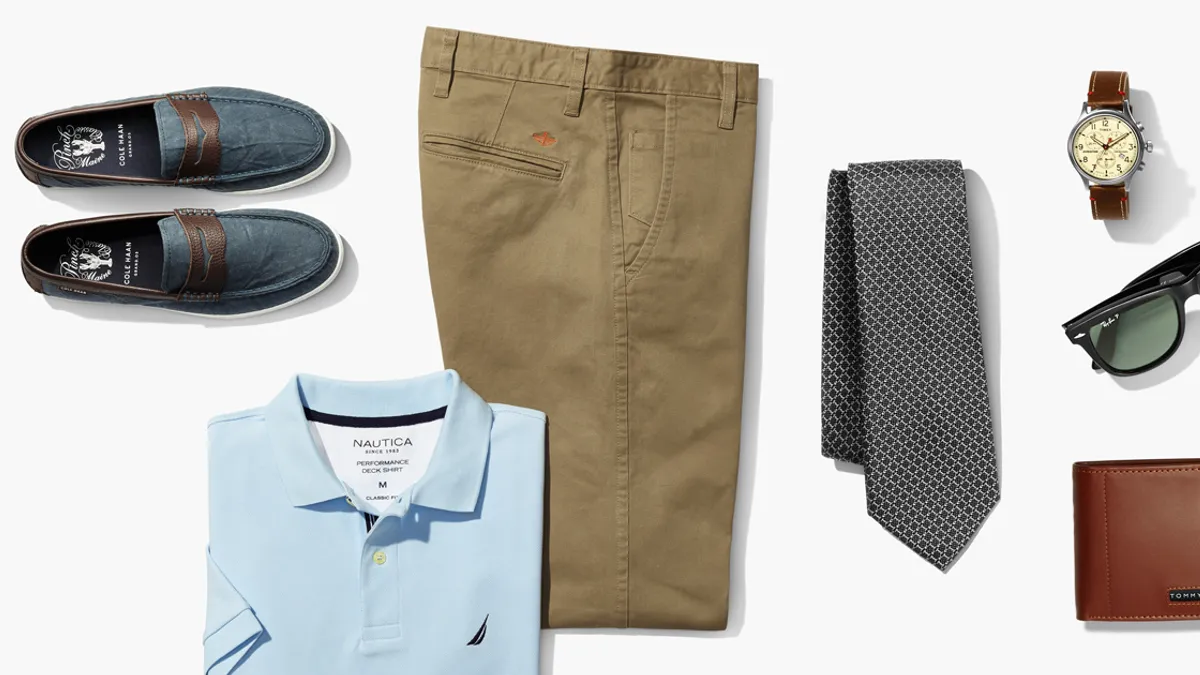Dive Brief:
-
After taking another 1.5% of market share in U.S. apparel sales last year, Amazon is edging closer to becoming the nation’s top apparel retailer, according to a note from Morgan Stanley cited by CNBC.
-
Department stores, in particular Sears Holdings and Macy’s, appear to be bearing the brunt of Amazon’s rise. Morgan Stanley predicts they’ll have just 8% of the American apparel market in 2022, down from 24% in 2006, according to the report. But large mall-based chains, including those of Ascena Retail Group, L Brands, Ralph Lauren and Chico’s, are also losing share.
-
Amazon’s Prime members are twice as likely as non-Prime customers to buy clothes there, up from 1.5 times more likely last year, according to the Morgan Stanley note. And brands themselves in some cases — including Nike, Ugg and Calvin Klein — are moving to sell on Amazon rather than through department stores, the analysts said.
Dive Insight:
Analysts and rivals continue to brace themselves for the day that Amazon vanquishes all other apparel sellers in the United States, and this week the picture seemed to get that much clearer when CEO Jeff Bezos revealed for the first time that the company boasts 100 million Prime members worldwide.
The e-commerce giant's success in apparel is hard won. Amazon has steadily worked to develop private label clothing in several segments and recently expanded its test of try-before-you-buy service, Prime Wardrobe, to address the pain points of not shopping in stores.
But there's no guarantee or inevitability in any retailer's rise in a given segment, and many rivals are making their own adjustments to apparel merchandising. Target and Walmart, for example, have recently introduced new private apparel lines for women, men and kids.
Both have much to lose from Amazon's rise. Among apparel shoppers who have switched to Amazon, Target was previously their go-to apparel retailer, according to research from retail think tank Coresight. Target apparel shoppers are also more likely than average to say they expect to buy apparel on Amazon in the next 12 months. Meanwhile, Walmart lost the second most share, according to the report. Department stores are also losing to Amazon in the category with Macy's and J.C. Penney ranking "disproportionately high" in terms of how many apparel shoppers they have lost in part or in full to Amazon Fashion, according to that report.
There are some limits to Amazon's appeal, providing ambitious rivals with opportunity. People go to Amazon for well-priced apparel, and Coresight Research founder-CEO Deborah Weinswig believes that Amazon is being perceived as an off-price apparel retailer. Half (48%) of Amazon apparel shoppers said they expect to pay less than full price when buying clothing or footwear on the site, 32% say they go there because Amazon offers the lowest prices and 49% say Amazon offers good value.
Still, Prime members, who are fairly well locked in thanks to their $99 annual membership fee, are driving Amazon's apparel sales, Coresight noted. Nearly two-thirds of Prime members say they've shopped for clothing or footwear there in the past year, nearly half (45.9%) said that they had shopped for apparel on Amazon in that time, and 48% said that they expect to buy apparel there in the coming 12 months. Among apparel shoppers, Amazon and Target are vying for second place (after Walmart), according to Coresight.
Those findings jibe with CPC Strategy research from earlier this year that found more than half (52%) of apparel shoppers who bought clothing online in the last six months said they shopped at Amazon. It's further evidence that Cowen & Co.'s now-famous prediction — that Amazon would leapfrog Macy's as America's biggest apparel seller — shouldn't have shocked anyone.













